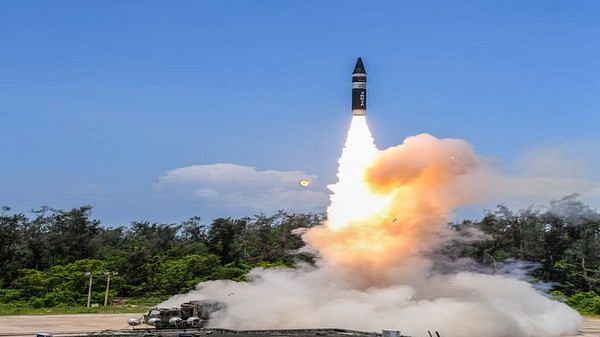NG Missile Vessels
FULL MEMBER

- Joined
- Apr 9, 2023
- Messages
- 1,600
- Reaction score
- 0
- Country
- Location
New Delhi: The 2,000km range Agni Prime, the next–generation ballistic nuclear missile that covers all critical cities in Pakistan, has cleared all tests and is set to be inducted into India’s arsenal.
The Agni P, initially named Agni-1P and weighing 50 per cent less than Agni 3, was successfully flight-tested by the Defence Research and Development Organisation (DRDO) from Dr APJ Abdul Kalam Island off the coast of Odisha on Wednesday around 7:30pm.
“During the flight test, all objectives were successfully demonstrated,” a statement by the Defence Ministry said.
This was the first pre-induction night launch conducted by the users after three successful developmental trials of the missile, validating the accuracy and reliability of the system.
The Defence Ministry said that range instrumentation like radar, telemetry, and electro–optical tracking systems were deployed at different locations, including two down-range ships, at the terminal point to capture flight data covering the entire trajectory of the vehicle.
Senior officials of the Strategic Forces Command (SFC), which is in charge of India’s nuclear arsenal, witnessed the successful flight test.
The Defence Ministry said the successful test has paved the way for the induction of the system into the Armed Forces.
Features that stand out
Unlike the other nuclear missiles in India’s arsenal, Agni Prime comes with its own unique technology, giving it more accuracy while making it difficult to intercept.
It comes with new composites, propulsion systems, innovative guidance, and control mechanisms, besides the latest navigation systems.
Sources in the defence and security establishment explained that Agni Prime can be manoeuvred at the point of entry into the earth’s atmosphere, a feature that is usually not available in a ballistic missile. This makes the Agni Prime more difficult to intercept.
Another aspect of this next–generation missile that makes it stand out from the rest is that it is a canisterised system, meaning the SFC has mode options when it comes to movement and launch.
The missile can be launched from rail or road and can be transported to various parts of the country easily.
The two-stage, solid-fuelled weapon system comes with new propulsion systems, composite motor casings, and inertial navigation systems based on advanced ring-laser gyroscopes. Gyroscopes show the location of the missile and the trajectory it is taking.
The ring-laser gyroscopes are more accurate.
While it was speculated that the new missile would replace Prithvi, Agni 1, and Agni 2 series of ballistic nuclear missiles, government sources earlier told ThePrint that it would not.
The missile will add to the array of ballistic nuclear missiles in India’s arsenal.

Agni Prime–next generation nuclear missile–set to be inducted into India’s arsenal
Agni Prime can be manoeuvred at the point of entry into the earth’s atmosphere, a feature that is usually not available in a ballistic missile.
 www.google.com
www.google.com


